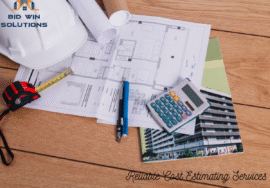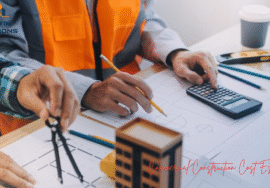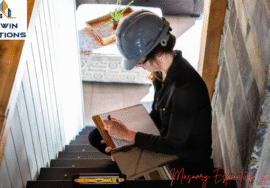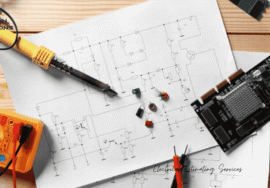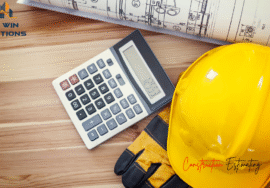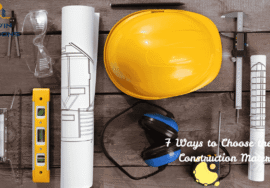
Mastering Drywall Estimator : A Complete Guide
If you’re working on a construction project, whether you’re a contractor, homeowner, or aspiring builder, one thing is certain: accurate drywall estimation can make or break your budget. It sounds simple on the surface, but the reality is that measuring and calculating drywall needs great skill. Done right, it saves time, cuts costs, and keeps your project moving smoothly.
In this complete guide, we’ll walk you through how to become an accurate drywall estimator anyone can trust. We’ll keep the language easy, the tips practical, and the advice based on real-world experience. Whether you’re estimating drywall for a single room or a multi-floor structure, this guide has you covered.
Why Drywall Estimation Matters?
You might be asking, “Why not just guess and buy extra?” Well, here’s why that’s a costly mistake:
- Wasted materials = wasted money.
- Ordering too little causes delays.
- Poor planning frustrates your team and affects the schedule.
Smart construction estimating ensures you stay on track, financially and time-wise as well. Also, drywall, being one of the most used interior materials, needs close attention during the estimating phase.
Step 1: Understand What You’re Estimating

Before you start doing math, you need to know what you’re working with.
What Is a Drywall?
Drywall (also called plasterboard, wallboard, or gypsum board) is used to make interior walls and ceilings. It typically comes in 4×8-foot sheets, though 4×10 and 4×12 options are also available.
There are also different types:
- Standard drywall: It is for dry rooms like bedrooms or living rooms.
- Moisture-resistant drywall (Greenboard): They are good for bathrooms or kitchens.
- Fire-rated drywall (Type X): These types of walls are best for garages or walls near the furnaces.
Each type may cost differently and may require different fasteners or compounds. A skilled drywall estimator always factors this in.
Step 2: Measure the Space (Correctly)
Here’s where most people go wrong—measurement errors.
Follow this easy formula:
- Measure the height and width of each wall.
- Multiply height × width to get square footage.
- Add the square footage of the ceiling (if drywall is being installed there).
- Add all wall and ceiling areas together.
- Deduct space for large doors and windows (but not small cutouts like electrical outlets).
- Add 10-15% extra for waste and errors.
Example:
- Wall 1: 10 ft high × 12 ft wide = 120 sq ft
- Wall 2: 10 ft high × 12 ft wide = 120 sq ft
- Ceiling: 12 ft × 12 ft = 144 sq ft
- Total: 384 sq ft
- 10% waste: 384 × 1.10 = 422 sq ft
Drywall sheets are usually 32 sq ft (4×8). So, 422 ÷ 32 = ~13.2 sheets
Round up—you’ll need 14 sheets.
This math is quite simple, but accuracy is the key to success. There is no doubt that any experienced drywall estimator will double-check measurements to avoid rework.
Step 3: Factor in All the Materials
Drywall isn’t just sheets. You’ll need more materials, and forgetting them can blow your budget.
Here’s what to include in your estimate:
- Drywall sheets (standard, moisture-resistant, fire-rated)
- Joint compound (mud)
- Drywall tape (paper or mesh)
- Corner bead (for corners and edges)
- Screws or nails
- Sandpaper or sanding blocks
- Primer and texture (if needed)
Pro tip: Create a materials list and assign estimated costs. This is a smart cost estimation in action. Don’t just rely on memory—write it down or use a digital tool.
Step 4: Consider Labor and Time
Material is only part of the equation. Labor can be the biggest cost indeed.
A good drywall estimator should know all these labor averages:
- One experienced worker can install 30–40 sheets a day.
- Taping and mudding take 1–2 additional days (due to drying time between coats).
- Sanding and cleanup take another day.
Labor rates vary by region and the project type, so check local averages also. Don’t forget to account for the crew size, difficulty of the work (e.g., high ceilings or curved walls), and site conditions.
Step 5: Don’t Forget Hidden Costs
Here are a few extra costs that often get missed:
- Delivery charges for drywall (it’s heavy!).
- Waste disposal fees or dumpster rentals.
- Scaffolding or lifts for high walls.
- Permits (if required).
Any seasoned construction estimating professional will tell you—if you forget these, your final costs will surprise you (in a bad way). Always try to leave room for contingencies.
Pro Tips from Expert Drywall Estimators
Do you want to think like a pro? Follow these insider tips:
- Always round up when ordering. It’s better to have a little extra than run out.
- Check the framing before estimating. Warped studs or uneven spacing can affect how much drywall you’ll need.
- Avoid seams near windows or doors—they crack more easily.
- Label your materials clearly—different areas might use different types of drywall.
- Use drywall estimating software if you’re working on larger or commercial jobs. It can speed up calculations and reduce errors.
Bonus: Use Technology to Boost Accuracy
There are tools built specifically for drywall estimators and other construction estimating professionals. These can make a huge difference in both speed and accuracy as well.
Consider apps or software that include:
- Room and wall dimension capture (via camera or laser).
- Automatic material breakdown.
- Built-in pricing databases.
- Exportable quotes and reports.
These tools aren’t just for the big companies. Even small contractors or solo builders can get benefit from them.
How to Estimate Drywall for a Whole House

If you’re working on a full-house estimate, break the job into smaller zones:
- Bedrooms
- Living areas
- Kitchen
- Bathrooms
- Hallways
- Garage
Estimate each zone separately and then add them together. This approach reduces mistakes and also helps to organize the workflow later.
Common Mistakes You Should Avoid
A quick list of what not to do:
- Relying on guesswork.
- Ignoring waste or odd-shaped walls.
- Forgetting ceilings.
- Not accounting for material types.
- Underestimating labor time.
- Skipping permit or cleanup costs.
Avoid all these things, and you’re already ahead of most.
Wrapping It Up: Your Roadmap to Drywall Estimation Success
 Indeed, becoming a skilled drywall estimator isn’t about fancy math—it’s about being careful, consistent, and complete.
Indeed, becoming a skilled drywall estimator isn’t about fancy math—it’s about being careful, consistent, and complete.
Here’s your simplified roadmap:
- Measure everything—accurately.
- Know your drywall types and match them to the right room.
- List every material, not just the big items.
- Factor in labor—installation, mudding, sanding.
- Use smart tools to speed up and support your estimates.
- Review and revise—every good estimator double-checks.
In the construction, confidence comes from clarity. And that’s exactly what a good construction estimating delivers.


